1. An Unwatched Volcano
Bagana volcano is one of the most active in Papua New Guinea, but it is remote, and so poorly monitored.
Located on the mountainous spine of Bougainville Island, it is both far from any cities or large towns and is hard to reach due to the rough terrain around it. Satellites are the best way for volcanologists to keep an eye on the active peak, which has an elevation of 5,741 feet (1,750 meters).
2. Fire Creates Beauty
As a diaphanous plume of smoke stretched out across the Bering Sea in early May, a passing satellite snapped a picture of the graceful haze.
A lovely image, indeed, yet it's likely the smoke is the result of a fiery inferno burning many miles to the west. In northern Russia, wildfires have been burning for days.
3. Ancient Discovery
A newly discovered shipwreck in the Gulf of Mexico may have originally gone down 200 years ago. The ship is full of glass bottles, ceramic plates and boxes of muskets.
The shipwreck was discovered 200 miles (321 kilometres) off the Gulf Coast in more than 4,000 feet (1,219 meters) of water by a Gulf of Mexico mission led by the National Oceanic and Atmospheric Administration (NOAA). The wooden hull of the ship has nearly disintegrated, but a greenish copper shell that once protected the ship's wood remains behind.
4. Chemical Soup, Yum
Scientists have uncovered clusters of volcanic vents towering above the seafloor in a region of the deep sea off the coast of Mexico.
The formations are home to a bizarre menagerie of creatures that thrive in the blistering heat and total darkness of these magma-powered hydrothermal vents, which are essentially fissures and cracks in the ocean floor that allow seawater to reach deep, superheated rocks, producing scalding jets of chemical-laden water.
5. Farewell, Precious Light
During the first week of May, the small crew left behind at an Antarctica research station bid farewell to the sun as it set for the last time for the season, plunging the frigid continent into the permanent midnight of winter.
The next sunrise will come about four months from now, when spring returns to the bottom of the world.
6. Our (More Than) Blue Marble
Think of it as an amped up version of the iconic "Blue Marble" image. A new photo of Earth from space highlights the striking beauty and intensely rich colours of our home planet.
The photo was taken by a Russian weather satellite, called Elektro-L No.1, which flies in a geostationary orbit more than 22,000 miles (35,700 kilometres) above the Earth's equator.
7. Earth as Modern Art
From far away, this tableau may look like something hanging on the walls of a modern art museum, but it's actually a photograph taken by an astronaut aboard the International Space Station of the area around Etosha Pan, a great dry, salt like in Africa.
This photograph captured a rare event where water from recent rains had travelled down the Ekuma and filled a lobe of the lake with light green water (mid-right in the image). Water has also flowed into a small offshoot dry lake, where it appears a brighter green (upper left).
8. Turmoil Over the Desert
Last week, a satellite spied turmoil in the skies over the Middle East as a massive dust storm swept across the region. At one point, the colossal storm's reach crossed the boundaries of four countries simultaneously.
In this image, captured May 11, the dust plume covers nearly all of Syria, and extends into Iraq, Saudi Arabia and Jordan. The dust was thickest in the west, especially over Jordan and northern Saudi Arabia, and thinned toward the east.
9. Sticking Close to Mom
The herd of European Bison at Scotland's Highland Wildlife Park welcomed a new addition earlier this month: a bison calf was born on May Day (May 1).
These powerful animals are Europe's largest land mammal, with males, called bulls, weighing between a whopping 1,300 to 2,200 pounds (600 to 1,000 kilograms), and standing nearly 6.5 feet (2 meters) high at their shoulders. European bison (Bison bonasus) are considered vulnerable by the IUCN Red List of Threatened Species.
Top image: Bagana volcano and its surroundings (left) and one of the explored shipwrecks in the Gulf of Mexico (right)
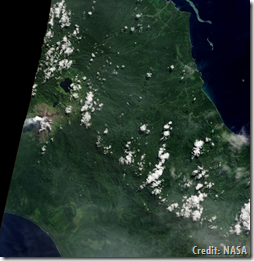
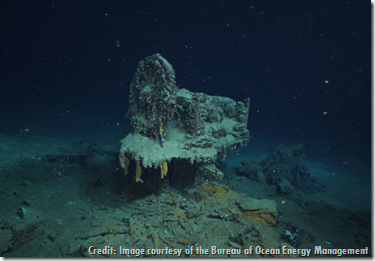


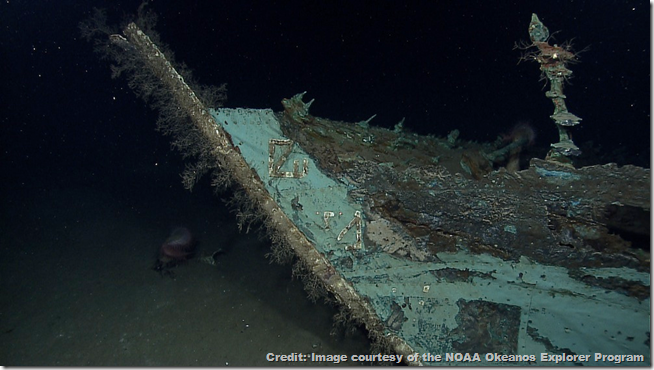
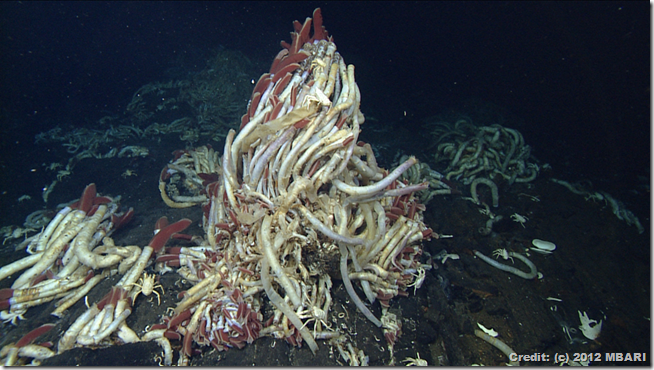
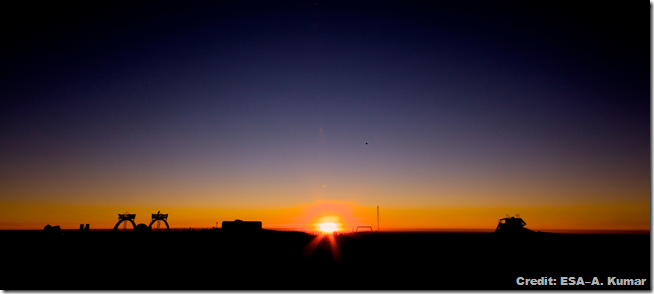
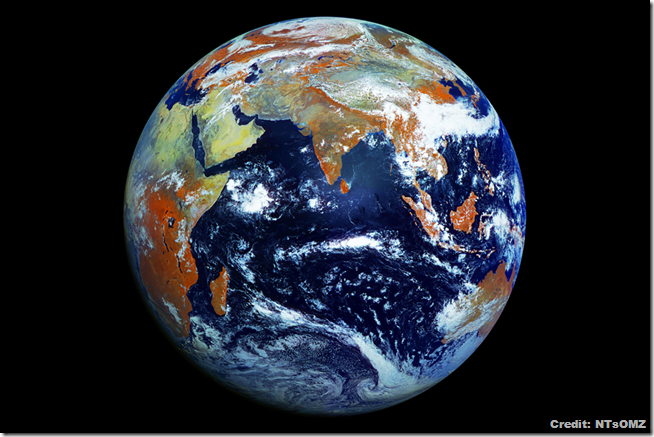
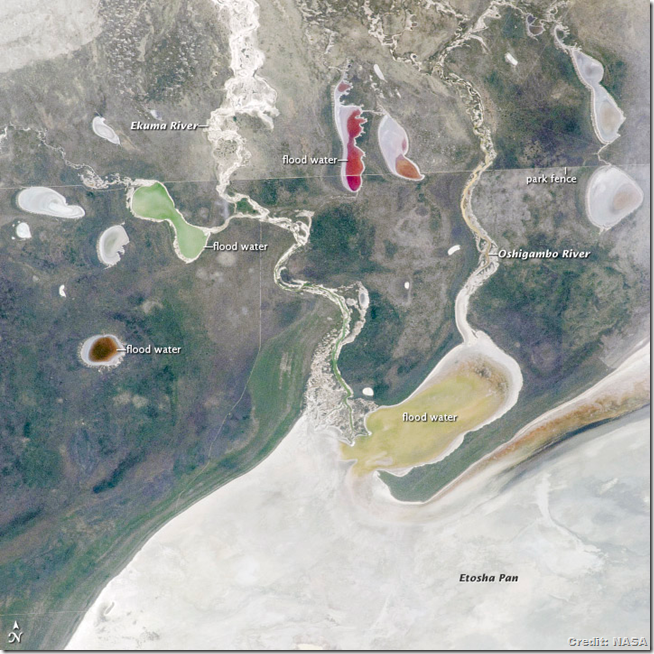
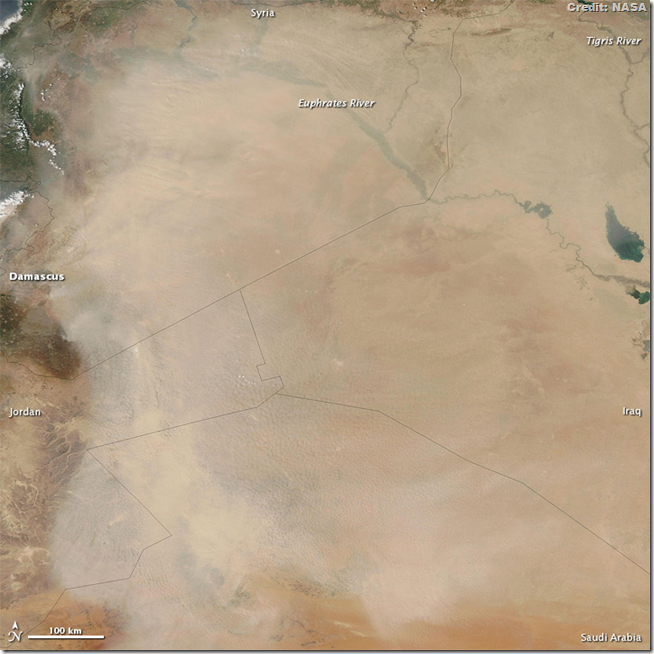
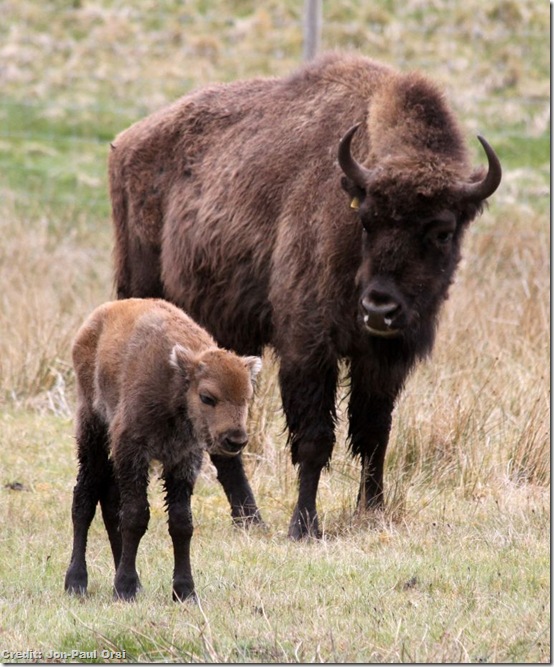
No comments:
Post a Comment
Please adhere to proper blog etiquette when posting your comments. This blog owner will exercise his absolution discretion in allowing or rejecting any comments that are deemed seditious, defamatory, libelous, racist, vulgar, insulting, and other remarks that exhibit similar characteristics. If you insist on using anonymous comments, please write your name or other IDs at the end of your message.